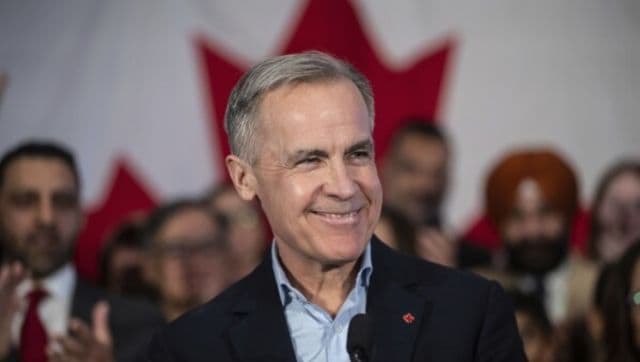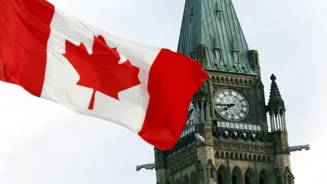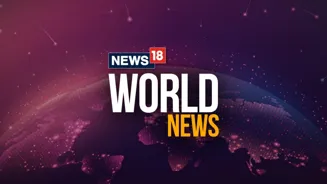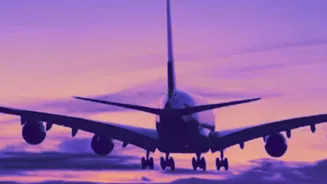What is the story about?
Is Canada planning to make it easier for Indians to apply via its Express Entry programme?
The Immigration, Refugees and Citizenship Canada (IRCC) has issued a draft for public consultation focused on the Express Entry
system. Ottawa is said to be considering creating new categories to make Express Entry easier for some applicants – which may benefit Indians.
The proposal, which was put up on the Canadian government’s website, is inviting feedback from the public. It will remain open for input till September 3. No further details have been announced. The new categories, if approved, would open in 2026.
But what is it? What do we know the new draft?
Let’s take a closer look
It is an
online system used by Canada’s federal government to attract skilled workers. A way for foreigners to gain permanent residency in Canada, it is said to be popular with Indians.
The Canadian government uses an “Express Entry draw” to decide who receives an invitation to apply for permanent residency through the programme. These are known as invitations to apply (ITAs).
The government invites candidates who meet the specific criteria for a certain category. This is in separate from general draws and program-specific
rounds such as those forthe Canadian Experience Class (CEC) and Provincial Nominee Program (PNP).
It selects the highest-ranking candidates from the applications received How you rank as a candidate is based on a number of different factors.

It does so by using a Comprehensive Ranking System (CRS), which takes into account, among other factors marital status, age, education, whether you have a degree, diploma or
certificate from a Canadian University and if you have passed English and French language tests in the past two years.
The Canadian government sends out invitations to apply under this scheme in several rounds. An applicant’s CRS score must be more than the minimum needed points score of their particular round. Cut-off scores may differ with each round. Those who are chosen have 60 days to apply.
One can determine if one is eligible for Express Entry by filling out a questionnaire on the website. Those who are
eligible can create an application online and submit the relevant documents.
The fee for Express Entry is around $1,100 (Rs 96,000) for applicants and another $1,100 (Rs 96,000) for their spouses. Applicants must pay $188 (Rs 16,500) for dependent children. The time taken to process an application varies as per the category one applies under.
Canada in issued 98,903 ITAs via Express Entry in 2024, 110,266 in 2023 and 45,115 in 2022. The peak came in 2021, when it issued 114,431 ITAs.
What do we
The new draft proposes creating an entirely new section – the ‘Leadership and Innovation’ category.
This would allow senior managers, researchers, and scientists to gain pathway to permanent residency. It defines senior managers as “highly skilled workers who oversee the operations of a company or organisation and who lead a team of employees”.
The IRCC said such leaders could “inject fresh perspectives, accelerate digital transformation, boost productivity, and help organisations meet
strategic goals”.
The report says researchers and scientists could “enhance productivity and performance” and “stimulate economic growth”. However, it did not specify What type of scientists or researchers would be given preference.
The influx of workers would thereby boost Canada’s competitiveness with other nations, the government says.
The move also seek to address the shortages in Canada’s labour market and acknowledges its ongoing struggle to find skilled workers for healthcare, trades such as construction, education,
science, technology, engineering and mathematics (STEM) fields, and agriculture.
Canada has also suggested attracting highly skilled military recruits from allied nations under a new category. They would play a role in supporting the Canadian Armed Forces.
Canada in May for the first time sent out 1,000 Express Entry invitations to eligible foreignersunder a new Education Occupations category. This category, which was added in February, was weighed in favour of those with work experience in Canada. It was done in order to
bolster the ranks of educational professionals in Canada –which the country is falling severely short on.
With inputs from agencies
The Immigration, Refugees and Citizenship Canada (IRCC) has issued a draft for public consultation focused on the Express Entry
The proposal, which was put up on the Canadian government’s website, is inviting feedback from the public. It will remain open for input till September 3. No further details have been announced. The new categories, if approved, would open in 2026.
But what is it? What do we know the new draft?
Let’s take a closer look
What is Express Entry?
It is an
The Canadian government uses an “Express Entry draw” to decide who receives an invitation to apply for permanent residency through the programme. These are known as invitations to apply (ITAs).
The government invites candidates who meet the specific criteria for a certain category. This is in separate from general draws and program-specific
It selects the highest-ranking candidates from the applications received How you rank as a candidate is based on a number of different factors.

Canada under Prime Minister Mike Carney has vowed to resolve the labour shortage of skilled workers. AP
It does so by using a Comprehensive Ranking System (CRS), which takes into account, among other factors marital status, age, education, whether you have a degree, diploma or
The Canadian government sends out invitations to apply under this scheme in several rounds. An applicant’s CRS score must be more than the minimum needed points score of their particular round. Cut-off scores may differ with each round. Those who are chosen have 60 days to apply.
One can determine if one is eligible for Express Entry by filling out a questionnaire on the website. Those who are
The fee for Express Entry is around $1,100 (Rs 96,000) for applicants and another $1,100 (Rs 96,000) for their spouses. Applicants must pay $188 (Rs 16,500) for dependent children. The time taken to process an application varies as per the category one applies under.
Canada in issued 98,903 ITAs via Express Entry in 2024, 110,266 in 2023 and 45,115 in 2022. The peak came in 2021, when it issued 114,431 ITAs.
What do we
know about the new draft?
The new draft proposes creating an entirely new section – the ‘Leadership and Innovation’ category.
This would allow senior managers, researchers, and scientists to gain pathway to permanent residency. It defines senior managers as “highly skilled workers who oversee the operations of a company or organisation and who lead a team of employees”.
The IRCC said such leaders could “inject fresh perspectives, accelerate digital transformation, boost productivity, and help organisations meet
The report says researchers and scientists could “enhance productivity and performance” and “stimulate economic growth”. However, it did not specify What type of scientists or researchers would be given preference.
The influx of workers would thereby boost Canada’s competitiveness with other nations, the government says.
The move also seek to address the shortages in Canada’s labour market and acknowledges its ongoing struggle to find skilled workers for healthcare, trades such as construction, education,
Canada has also suggested attracting highly skilled military recruits from allied nations under a new category. They would play a role in supporting the Canadian Armed Forces.
Canada in May for the first time sent out 1,000 Express Entry invitations to eligible foreignersunder a new Education Occupations category. This category, which was added in February, was weighed in favour of those with work experience in Canada. It was done in order to
With inputs from agencies
Do you find this article useful?















